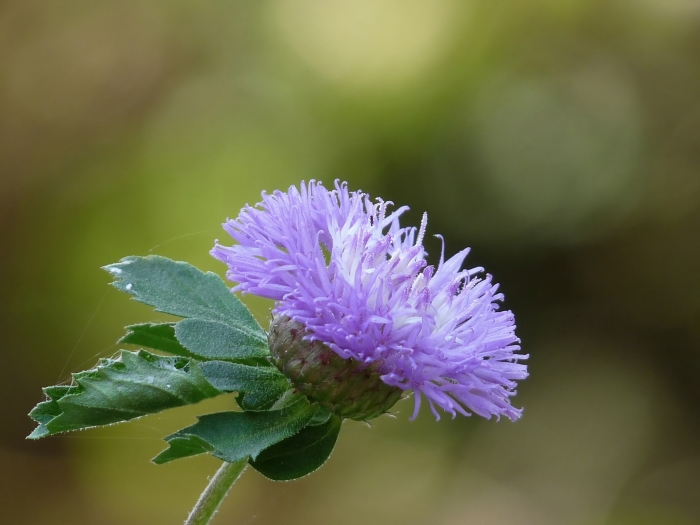Larkdaisy
(Centratherum punctatum)
Larkdaisy (Centratherum punctatum)
/
/

Jeevan Jose, Kerala, India
CC BY-SA 4.0
Image By:
Jeevan Jose, Kerala, India
Recorded By:
Copyright:
CC BY-SA 4.0
Copyright Notice:
Photo by: Jeevan Jose, Kerala, India | License Type: CC BY-SA 4.0 | License URL: https://creativecommons.org/licenses/by-sa/4.0 | Uploader: Jkadavoor | Publisher: Wikimedia Commons | Title: Centratherum_punctatum_at_Kadavoor.jpg | Notes: {{Information |Description=Ceratozamia_Hildae_Leave |Source=self-made |Date=11.12.2007 |Author= [[User:PeregrinusX|PeregrinusX]] |Permission=yes |other_versions= }} [[Category:Zamiaceae]] |











































Estimated Native Range
Summary
Centratherum punctatum, commonly known as Larkdaisy, is an evergreen perennial subshrub or herb native to open woodlands and grasslands in Tropical America. It typically grows to a height of 1-2 feet (0.3-0.6 meters) and a width of 2-4 feet (0.6-1.2 meters). The plant features attractive purple flowers with a central disc of darker florets, which bloom in the warm months, adding a splash of color to garden settings. The foliage is aromatic when crushed and can add a pleasant scent to the area.
Larkdaisy is valued for its ease of maintenance and the long-lasting, showy flowers that attract pollinators such as butterflies. It is often used in borders, as a ground cover, or in container plantings. This plant prefers full sun to part shade and requires well-drained soil. It is drought-tolerant once established, making it suitable for xeriscaping. While it is not known for serious pest or disease problems, it can become invasive in some regions due to its self-seeding habit. Gardeners should be cautious about planting it outside its native range and check local regulations.CC BY-SA 4.0
Larkdaisy is valued for its ease of maintenance and the long-lasting, showy flowers that attract pollinators such as butterflies. It is often used in borders, as a ground cover, or in container plantings. This plant prefers full sun to part shade and requires well-drained soil. It is drought-tolerant once established, making it suitable for xeriscaping. While it is not known for serious pest or disease problems, it can become invasive in some regions due to its self-seeding habit. Gardeners should be cautious about planting it outside its native range and check local regulations.CC BY-SA 4.0
Plant Description
- Plant Type: Subshrub, Herb
- Height: 1-1.5 feet
- Width: 2-4 feet
- Growth Rate: Moderate
- Flower Color: Blue, Purple
- Flowering Season: Summer, Fall
- Leaf Retention: Evergreen
Growth Requirements
- Sun: Full Sun
- Water: Medium
- Drainage: Medium
Common Uses
Deer Resistant, Erosion Control, Fragrant, Groundcover, Rabbit Resistant, Showy Flowers
Natural Habitat
native to open woodlands and grasslands in Tropical America
Other Names
Common Names: Brazil Button Flower
Scientific Names: , Centratherum punctatum, Centratherum intermedium, Centratherum muticum, Centratherum violaceum, Centratherum brachylepis, Centratherum punctatum f. punctatum, Centratherum punctatum var. parviflorum, Vernonia brachylepis, Ampherephis mutica
GBIF Accepted Name: Centratherum punctatum Cass.